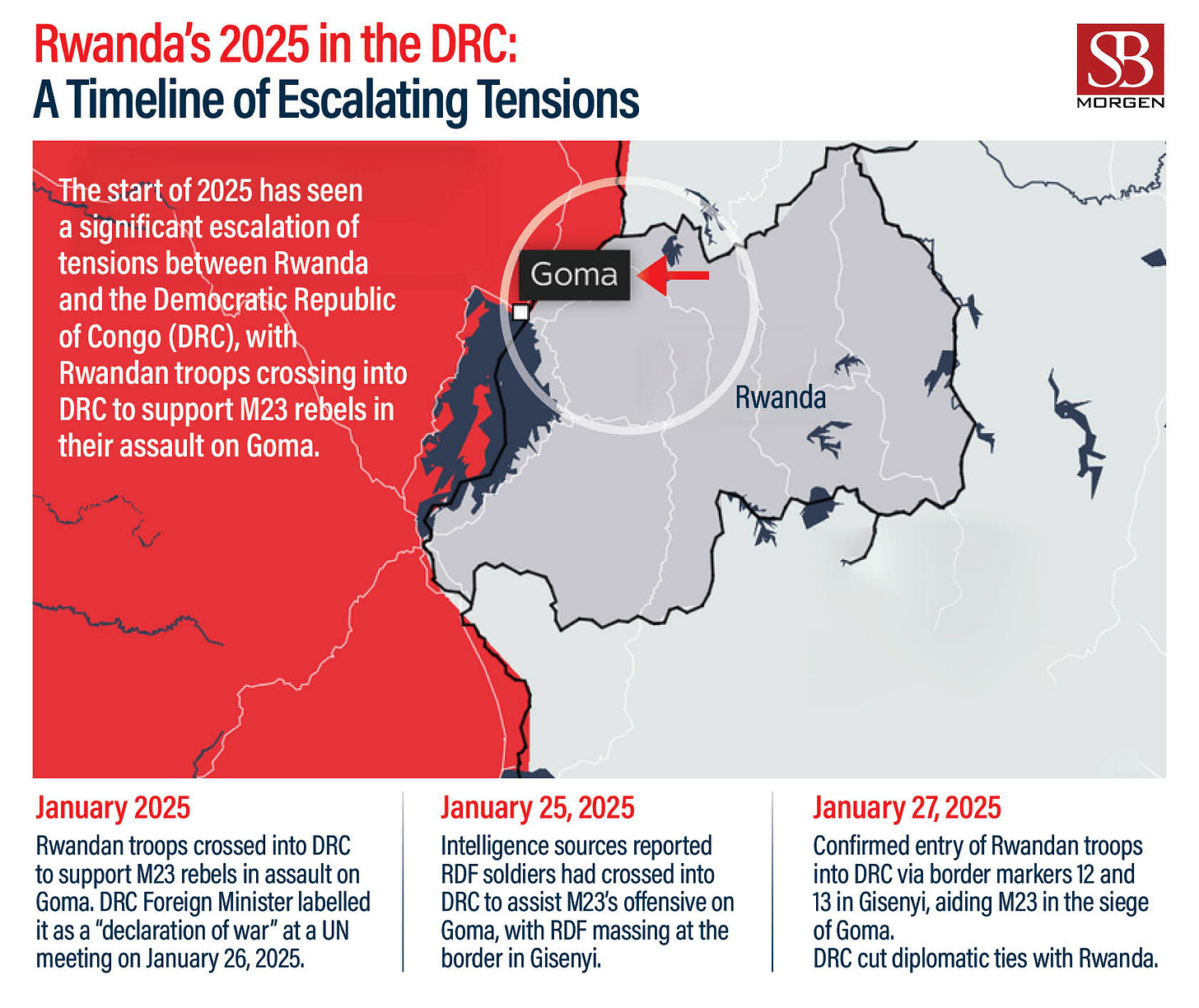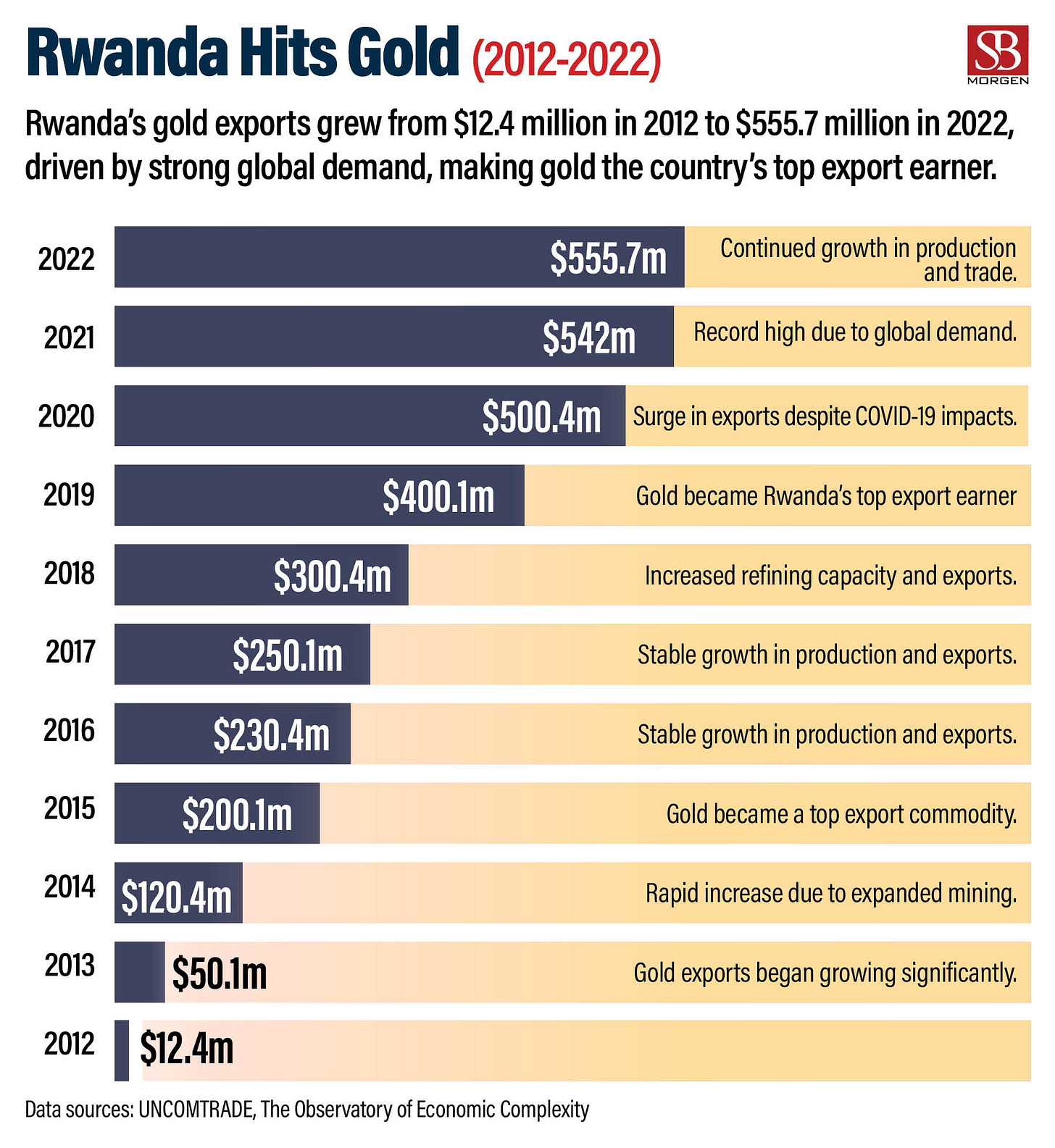From Rebellion to Resource Wars to Regional War: The M23 Offensive in Eastern DRC
M23 rebels' capture of Goma has escalated the DRC conflict, marked by fighting, Rwandan involvement accusations, tensions, and resource exploitation concerns.
The Rwandan-backed M23 rebels' capture of Goma, the largest city in the eastern Democratic Republic of Congo, a week ago marks a significant escalation in the region's ongoing conflict. The rebel group initially formed to advocate for the rights of the Tutsi minority, but it has grown into a powerful force with broader political and economic ambitions. The M23's advance has been accompanied by intense fighting, accusations of Rwandan military involvement, and rising diplomatic tensions. UN peacekeepers faced heavy fire, and protests erupted in Kinshasa, targeting embassies of countries perceived as complicit or indifferent, including France, Belgium, Rwanda, and the United States.
The conflict has drawn international attention, with UN Secretary-General António Guterres engaging in talks with the presidents of the DRC and Rwanda and the UN Security Council convening an emergency meeting. A public spat between Rwandan President Paul Kagame and South African President Cyril Ramaphosa further heightened tensions, with Ramaphosa condemning the deaths of South African troops deployed in the DRC and Kagame accusing him of distorting private conversations. Kagame later offered assurances of safe passage for South African forces, signalling a tentative de-escalation.
The capture of Goma, a strategic commercial hub near the Rwandan border, represents a critical turning point. This is the first time since 2012 that the M23 has seized the city, highlighting the group's growing strength and Rwanda's increasingly overt support. The UN has accused Rwanda of deploying thousands of troops in the DRC, with reports of Rwandan forces fighting alongside M23 rebels. The conflict is further complicated by the region's ethnic diversity, including Bantu, Nilotic, and Sudanic groups, as well as Rwandan Hutu and Tutsi communities, whose presence has fueled land and citizenship disputes.
Economic motives are also at play, with the M23 controlling coltan mining operations in the Rubaya area, a region rich in tantalum, a key component in electronics. The group reportedly generates $300,000 monthly from these operations, while Rwanda's coltan and gold exports have surged, raising concerns about the exploitation of Congolese resources. Despite mounting evidence of Rwandan involvement, the international response has been muted, with limited sanctions and a lack of decisive action from global powers.
The fall of Goma underscores the fragile and volatile nature of the region, with the potential to trigger a wider regional war. The international community faces urgent questions about how to respond, including whether to increase military support for the DRC, apply diplomatic pressure on Rwanda, and address the illicit exploitation of resources fueling the conflict. Diplomatic initiatives like the Luanda Process must be revitalised to foster dialogue and de-escalation. Without decisive action, the crisis risks further humanitarian suffering and regional destabilisation. The window for intervention is closing, and the stakes are higher than ever.



